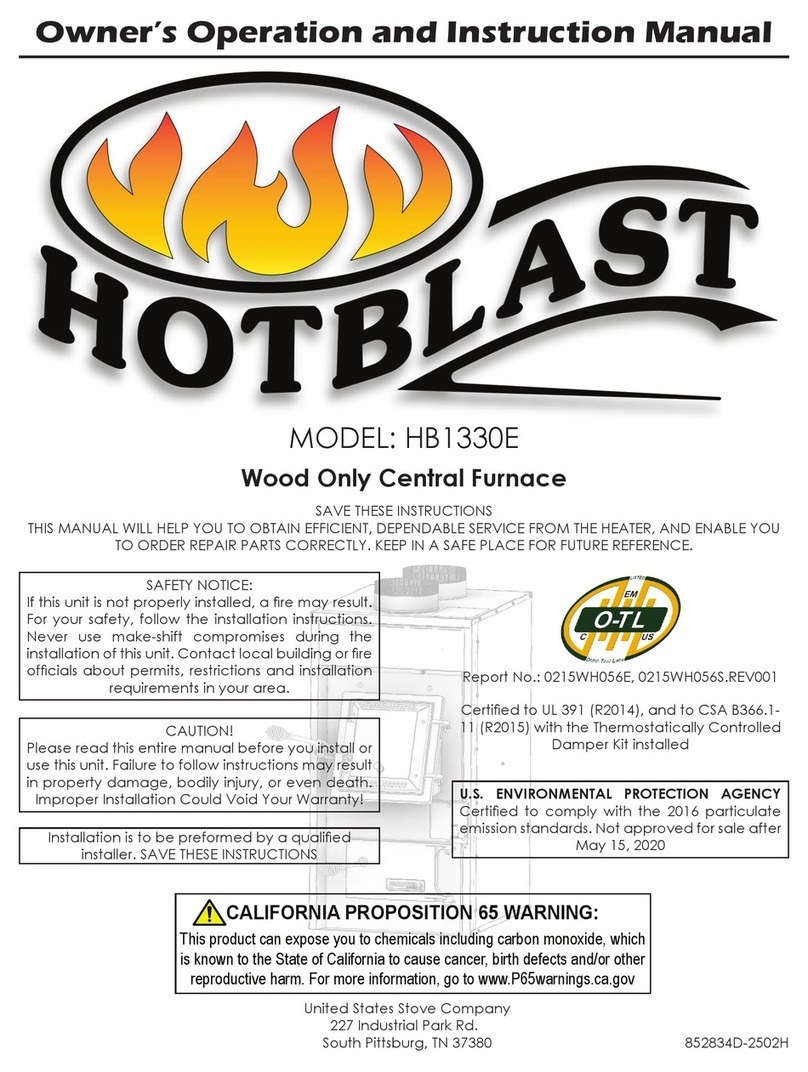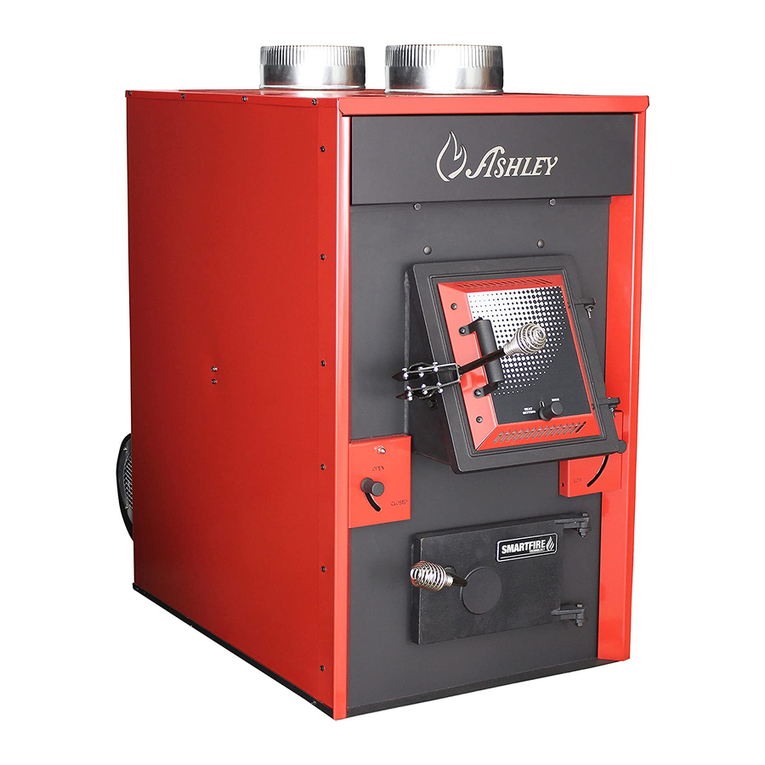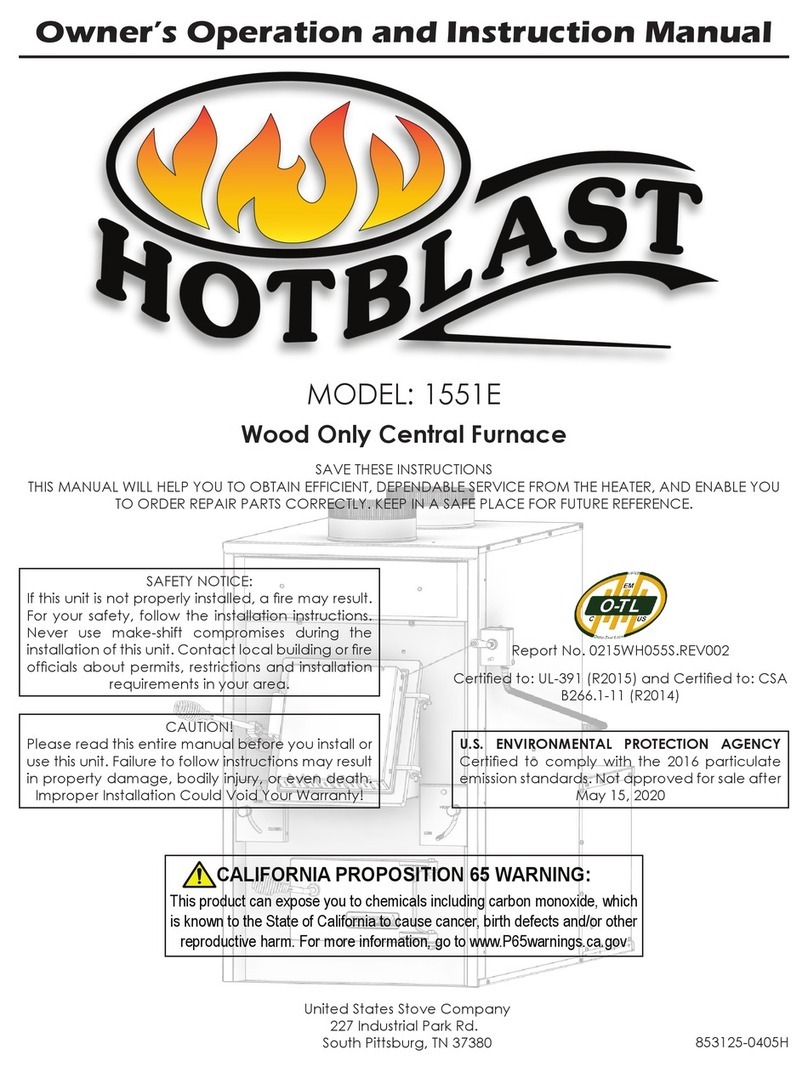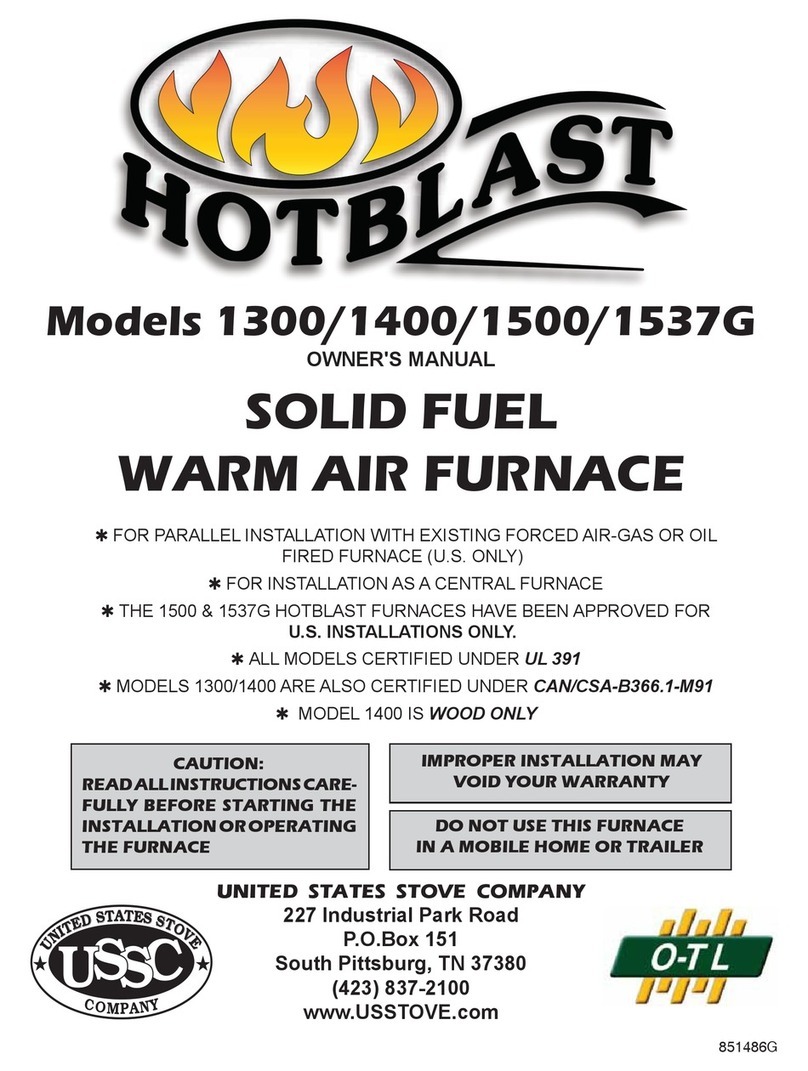
4
Rules for safe installation and operation
Read these rules and the instructions carefully. Failure to follow them will cause a
hazard that could result in death, serious bodily injury, and/or property damage.
Your Furnace is designed to be installed in a parallel air flow arrangement with a gas or oil-
fired forced air upflow-type central furnace, or it may be installed as a central furnace.
1. Check your local codes. The installation must comply
with their rulings.
2. Do not install this furnace in a mobile home or trailer.
3. Always connect this furnace to a chimney and vent to
the outside. Never vent to another room or inside a
building.
4. Donotconnect thisfurnacetoanaluminumTypeBgas
vent. This is not safe and is prohibited by the National
FireProtectionAssociationCode.Thisfurnacerequires
amasonryorListedFactoryBuiltChimneyforresidential
type or Building HeatingAppliance Chimney. Use a 6"
diameter chimney or larger, that is high enough to give
a good draft.
5. Be sure that if a masonry chimney is used, it is safely
constructed and in good repair. Have the chimney
inspected by the Fire Department or an inspector.
6. Inspect chimney connector and chimney before and
frequently during the heating season for any deposit
of creosote or soot which must be removed.
7. Provide air for combustion into the room where the fur-
nace is located. If the intake is not in the same room,
air must have free access to the room.
8. CASTIRONPARTSMUSTBE"SEASONED"TOAVOID
CRACKING, BUILD ONLY SMALL FIRES ON FIRST
USE.
9. To prevent injury, do not allow anyone to use this fur-
nacewho isunfamiliar with thecorrectoperation ofthe
furnace.
10. For further information on using your furnace safely,
obtainacopyofthe NationalFireProtectionAssociation
(NFPA) publication "Chimney's, Fireplaces and Solid
Fuel Burning Appliances" NFPA 211. The address of
the NFPA is Batterymarch Park, Quincy, MA 02269.
11. Keep the ashpit section free of excess ashes. Do not
allow ashes to stack higher than the sides of the ash
pan.
12. DISPOSALOFASHES-Placeashesinametalcontainer
with a tight fitting lid. Keep the closed container on a
noncombustible floor or on the ground, well away from
allcombustiblematerials. Keeptheashesintheclosed
container until all cinders have thoroughly cooled. The
ashes may be buried in the ground or picked up by a
refuse collector.
13. CAUTION- The special paints used on your furnace
may give off some smoke while they are curing dur-
ing first few fires., Build small fires at first. The metal
used in construction of the furnace and duct work has
a light coating of oil. This could give off smoke and/or
odor from registers when furnace is used for the first
time. Thisshoulddisappearafterashortperiodoftime.
Once this burn-off has occurred, it should not reoccur.
14. CARING FOR PAINTED PARTS- This furnace has a
painted outside jacket, which is durable, but it will not
stand rough handling or abuse. When installing your
furnace, use care in handling. Clean with soap and
warm water when furnace in not hot. DO NOT use
any acids or scouring soap, as these wear and dull
the finish. DISCOLORATION WILL OCCUR IF THE
FURNACEISOVERHEATED. FOLLOWOPERATING
INSTRUCTIONS CAREFULLY.
15. Keep the feed and ash doors closed at all times except
while tending the furnace.
CAUTION
DO NOT OPERATE WITH THE FEEDAND/OR ASH
DOOR OPEN. THIS FURNACE IS DESIGNED FOR
THERMOSTATICOPERATION. OPERATIONWITH
ANY OF THESE DOORS OPEN WILL OVERHEAT
AND DAMAGE THE FURNACE.
WARNING
NEVERSTOREFLAMMABLELIQUIDS,ESPECIALLY
GASOLINE, IN THE VICINITY OF THE FURNACE.
CAUTION
GASES THAT ARE DRIVEN FROM FRESH COAL
MUSTBEBURNEDORTHEYWILLACCUMULATE
AND EXPLODE. NEVER SMOTHERAFIRE WHEN
ADDING FRESH COAL.
CAUTION
NEVER USE GASOLINE, GASOLINE-TYPE LAN-
TERN FUEL, KEROSENE, CHARCOAL LIGHTER
FLUID, OR FLAMMABLE LIQUIDS TO START OR
"FRESHEN UP" A FIRE IN THE FURNACE.



































